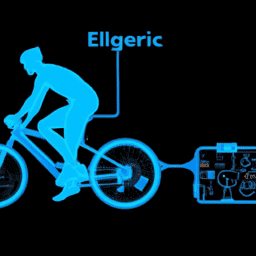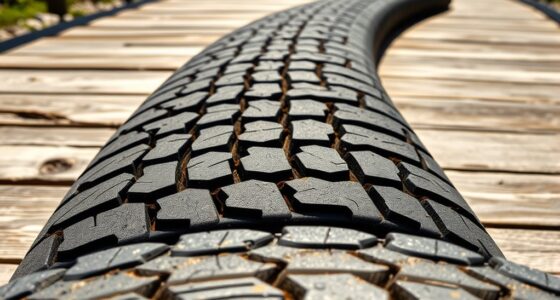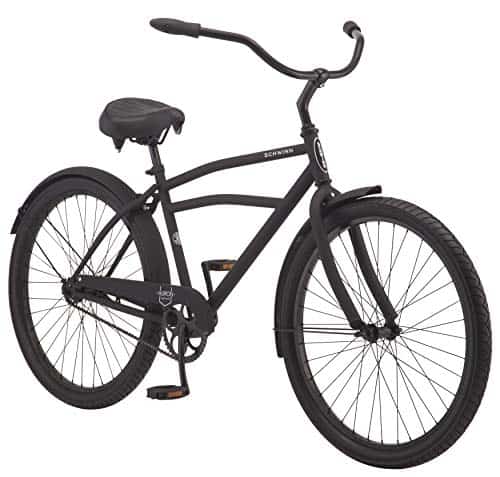As a cycling enthusiast in Florida, I strongly advise always donning a helmet when riding. It’s not only a measure of responsibility but can also be crucial in avoiding severe head injuries if an accident occurs.
However, it’s important to know who is required to wear a helmet by law in Florida.
Florida law mandates that all cyclists under the age of 16 must wear a helmet while riding on a bicycle. This law applies to anyone operating a bicycle on public roads, sidewalks, or bike paths.
While it’s not required for adults to wear helmets in Florida, it’s highly recommended for safety reasons. It’s important to note that even if you’re not required to wear a helmet by law, it’s always a good idea to wear one to protect yourself in case of an accident.
Key Takeaways
- All cyclists under 16 are required by law to wear a helmet in Florida.
- Adults are not legally required to wear helmets while cycling but it is highly recommended.
- Breaking helmet laws can result in fines and points on a driver’s license.
- There are legal exemptions to Florida’s helmet laws.
Overview of the Importance of Wearing a Bicycle Helmet
You might be surprised to learn just how crucial wearing a bike helmet can be – it can make all the difference in protecting your head from serious injury while cycling. The effectiveness of helmets in reducing head injuries has been well-documented in various studies.
In fact, studies show that helmets can reduce the risk of head injuries by up to 85%. This is because helmets are designed to absorb the shock and impact of a collision, and spread the force over a larger area, reducing the impact on any one spot.
Furthermore, it’s important to note that the long-term use of helmets can also have a positive impact on injury prevention. The more often you wear a helmet, the more likely you are to continue wearing it habitually, making it a natural part of your cycling routine. This means that even if you are involved in a minor accident, your head will still be protected.
It’s important to make sure your helmet fits properly, and to check it regularly for any signs of damage. With that being said, let’s take a look at who’s required to wear a helmet in Florida.
Who is Required to Wear a Helmet in Florida
Cyclists traversing the sunshine state must abide by a mandatory safety measure while riding, which is wearing a helmet. The Florida Statute Section 316.2065 requires all bicyclists under the age of 16 to wear a helmet that meets the safety standards of the Consumer Product Safety Commission. However, it’s recommended that all bicyclists, regardless of their age, wear a helmet for their own safety.
Here are some important points to keep in mind regarding Florida helmet exemptions and helmet laws in other states:
-
In Florida, adults over the age of 16 aren’t required to wear a helmet while riding a bicycle.
-
Some cities in Florida have their own helmet laws that extend beyond state laws. For example, in the city of Key Biscayne, all cyclists, regardless of age, are required to wear a helmet.
-
Other states, such as California and New York, have universal helmet laws that require all cyclists to wear a helmet while riding.
-
Some states, such as Iowa and Illinois, have no state-wide helmet laws, but have local laws that require helmets for minors.
It’s important to know and follow the helmet laws in your state or city to ensure your safety while cycling. In the next section, we’ll discuss the penalties for violating helmet laws.
Penalties for Violating Helmet Laws
Breaking the law regarding helmets while cycling could result in consequences that I may want to avoid. In Florida, the penalties for violating helmet laws can be steep. The fine amount for a first-time offense can range from $30 to $100, while subsequent offenses can result in fines up to $500. Additionally, points may be added to the offender’s driver’s license, which could lead to higher insurance rates.
It’s important to note that there are some legal exemptions to Florida’s helmet laws. These exemptions include those riding bicycles on private property, those riding within a municipality that does not have a helmet law, and those riding on a bicycle that is powered by an electric motor with a maximum speed of 20 miles per hour. However, it’s still recommended that all cyclists wear a helmet to ensure their safety on the road.
When it comes to choosing and wearing a helmet, there are a few tips to keep in mind.
Tips for Choosing and Wearing a Helmet
When selecting and sporting a helmet, it’s essential to consider the fit, comfort, and style to ensure a safe and enjoyable ride. First and foremost, the helmet must fit snugly on your head without any gaps or wobbling. To find the right size, measure the circumference of your head and compare it to the manufacturer’s sizing chart.
Additionally, adjust the straps to make sure the helmet sits level on your forehead and covers the top of your head. Comfort is also crucial when it comes to helmet selection. Look for helmets with adequate ventilation to prevent overheating during long rides. Some helmets also come with additional padding to provide extra cushioning and support.
Lastly, consider the helmet’s style. While it’s important to prioritize safety over fashion, choose a helmet that fits your personal style and makes you feel confident on the road. With the right helmet selection and proper fit, you can enjoy a safe and comfortable ride in Florida.
Now that we’ve covered helmet selection and fit, let’s move on to some safety tips for bicycling in Florida.
Safety Tips for Bicycling in Florida
To ensure your safety while biking in the Sunshine State, it’s important to be aware of some helpful tips.
First and foremost, always wear proper clothing. Florida’s hot and humid weather can make it tempting to wear light and airy clothing, but it’s crucial to protect your skin from the sun and wear clothes that won’t get caught in your bike’s gears or chain.
Secondly, route planning is essential. Florida is home to many beautiful bike trails, but it’s important to research your route beforehand to avoid any potentially dangerous areas. Consider traffic volume, road conditions, and any potential hazards such as construction sites or busy intersections.
It’s also a good idea to let someone know your planned route and expected arrival time in case of an emergency.
Lastly, always stay alert and aware of your surroundings. Keep an eye out for cars, pedestrians, and other bikers, and make sure to follow all traffic laws and signals.
By following these simple safety tips, you can enjoy all that Florida has to offer while staying safe on your bike.
Frequently Asked Questions
What is the cost of a typical bicycle helmet in Florida?
I’ve researched bicycle helmet prices and features in Florida and found that the cost varies based on quality. Comparing options, the average price for a good quality helmet is around $50-$70. It’s important to invest in a helmet that meets safety standards.
Are there any exemptions for certain age groups or types of cyclists when it comes to wearing a helmet in Florida?
Isn’t it ironic? Despite the potential dangers of cycling, Florida only requires riders under 16 to wear helmets. But fear not, there are no age restrictions for those who enjoy living life on the edge. However, certain exemptions do apply.
Can a cyclist be fined for not wearing a helmet if they are not riding on a public road in Florida?
As a cyclist in Florida, it’s my personal responsibility to prioritize my safety by wearing a helmet, regardless of whether I’m on a public road or not. Fines may not be enforced, but it’s still important for my own well-being.
What is the process for reporting a cyclist who is not wearing a helmet in Florida?
To report a cyclist not wearing a helmet in Florida, call your local police department. There may be legal consequences for the cyclist, but they depend on the location and circumstances of the incident.
Are there any organizations or programs in Florida that provide free or discounted helmets to cyclists?
As a Florida cyclist, I recently learned about various Florida helmet donation programs and community helmet drives that provide free or discounted helmets. These programs offer a vital resource for cyclists to stay safe on the road.
Conclusion
In conclusion, wearing a bicycle helmet can save your life. It’s not only mandatory for certain age groups in Florida, but it’s also highly recommended for all cyclists. The penalties for violating helmet laws can be costly, but the consequences of not wearing a helmet can be even more severe.
When it comes to choosing and wearing a helmet, make sure it fits properly and is comfortable to wear. Remember, safety should always come first. As the saying goes, "better safe than sorry."
So, the next time you go for a bike ride in Florida, don’t forget to protect your head with a helmet.
Stay safe and happy cycling!









